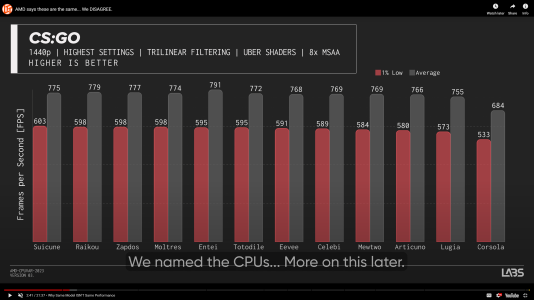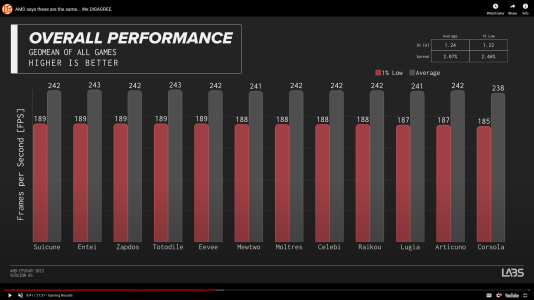- Aug 25, 2001
- 56,587
- 10,225
- 126
Yeah, that was siliconlottery.com, a domain that's now defunct sadly.At one time (maybe they are still around ??) you could spend extra to get a tested golden sample chip in the "chip lottery".


All 7800X3D chips use one CCD. The duall ccd ones have one CCD turned off. Happens when the dual-ccd X3D chip can't be used for 7900X3D or when demand for 7900X3D is lowIf i were to take a random guess, the single underforming 7800x3d is a dual CCD unicorn (there were a few out in the wild close to release)
And what relevance do you think that have to do with anything i wrote above ?All 7800X3D chips use one CCD. The duall ccd ones have one CCD turned off. Happens when the dual-ccd X3D chip can't be used for 7900X3D or when demand for 7900X3D is low
dual CCD 7800X3D perform the same as regular ones, as the second die gets disabled completely. There's 0 difference between there being no die and there being a disabled dieAnd what relevance do you think that have to do with anything i wrote above ?
But slightly higher power (or so I read). Which can influence peak frequency of course.dual CCD 7800X3D perform the same as regular ones, as the second die gets disabled completely. There's 0 difference between there being no die and there being a disabled die
I think his results match this theory: The dual CCD parts that end up as 7800X3D weren't generally the best silicon quality. That's why they were selected to have a CCD disabled to meet 7800X3D demand.dual CCD 7800X3D perform the same as regular ones, as the second die gets disabled completely. There's 0 difference between there being no die and there being a disabled die


